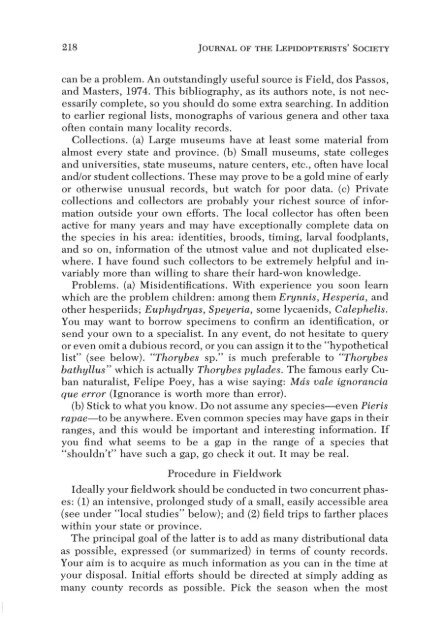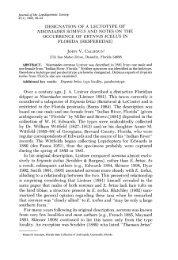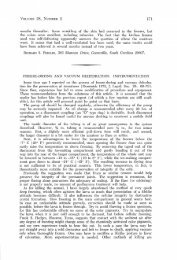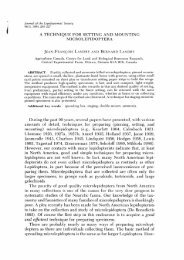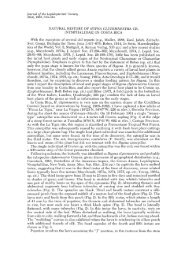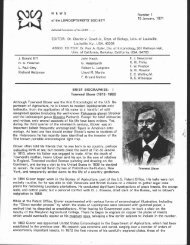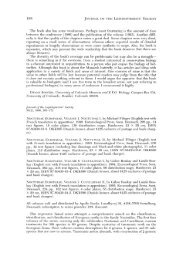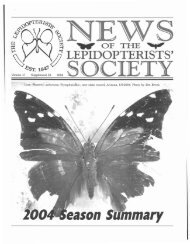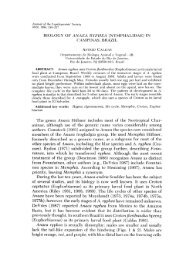HOW TO MAKE REGIONAL LISTS OF BUTTERFLIES - Yale University
HOW TO MAKE REGIONAL LISTS OF BUTTERFLIES - Yale University
HOW TO MAKE REGIONAL LISTS OF BUTTERFLIES - Yale University
You also want an ePaper? Increase the reach of your titles
YUMPU automatically turns print PDFs into web optimized ePapers that Google loves.
218 JOURNAL <strong>OF</strong> THE LEPIDOPTERISTS' SOCIETYcan be a problem. An outstandingly useful source is Field, dos Passos,and Masters, 1974. This bibliography, as its authors note, is not necessarilycomplete, so you should do some extra searching. In additionto earlier regional lists, monographs of various genera and other taxaoften contain many locality records.Collections. (a) Large museums have at least some material fromalmost every state and province. (b) Small museums, state collegesand universities, state museums, nature centers, etc., often have localand/or student collections. These may prove to be a gold mine of earlyor otherwise unusual records, but watch for poor data. (c) Privatecollections and collectors are probably your richest source of informationoutside your own efforts. The local collector has often beenactive for many years and may have exceptionally complete data onthe species in his area: identities, broods, timing, larval foodplants,and so on, information of the utmost value and not duplicated elsewhere.I have found such collectors to be extremely helpful and invariablymore than willing to share their hard-won knowledge.Problems. (a) Misidentifications. With experience you soon learnwhich are the problem children: among them Erynnis, Hesperia, andother hesperiids; Euphydryas, Speyeria, some lycaenids, Calephelis.You may want to borrow specimens to confirm an identification, orsend your own to a specialist. In any event, do not hesitate to queryor even omit a dubious record, or you can assign it to the "hypotheticallist" (see below). "Thorybes sp." is much preferable to "Thorybesbathyllus" which is actually Thorybes pylades. The famous early Cubannaturalist, Felipe Poey, has a wise saying: Mas vale ignoranciaque error (Ignorance is worth more than error).(b) Stick to what you know. Do not assume any species-even Pierisrapae-to be anywhere. Even common species may have gaps in theirranges, and this would be important and interesting information. Ifyou find what seems to be a gap in the range of a species that"shouldn't" have such a gap, go check it out. It may be real.Procedure in FieldworkIdeally your fieldwork should be conducted in two concurrent phases:(1) an intensive, prolonged study of a small, easily accessible area(see under "local studies" below); and (2) field trips to farther placeswithin your state or province.The principal goal of the latter is to add as many distributional dataas possible, expressed (or summarized) in terms of county records.Your aim is to acquire as much information as you can in the time atyour disposal. Initial efforts should be directed at simply adding asmany county records as possible. Pick the season when the most


